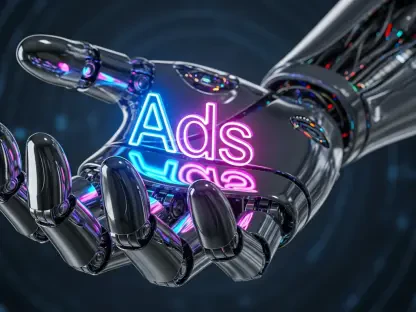Today, we’re thrilled to sit down with Anastasia Braitsik, a global leader in SEO, content marketing, and data analytics. With her finger on the pulse of digital trends, Anastasia has helped countless businesses navigate the ever-evolving landscape of online marketing. In this interview, we dive into the transformative power of digital strategies, the role of cutting-edge technologies like AI, and the unique opportunities in regions like the Middle East. We’ll explore how businesses can adapt to 2025’s emerging trends and leverage tools to build stronger connections with their audiences.
How would you define digital marketing in a way that anyone can understand, and why does it matter so much today?
Digital marketing, at its core, is about promoting products or services using online tools and platforms—think websites, social media, search engines, or email. It’s all the ways businesses connect with people through the internet or mobile devices. It matters today because almost everyone is online, and it gives companies a chance to reach a massive, global audience in a way that’s cost-effective. More than that, it lets you personalize your approach, track what’s working, and build real relationships with customers in ways traditional marketing just can’t match.
What role does social media play in shaping how businesses interact with their customers?
Social media has completely changed the game. It’s like a giant, worldwide conversation where businesses can talk directly to billions of people. Platforms like Instagram, TikTok, or LinkedIn let brands target specific groups, share their story, and engage in real-time. It’s not just about posting ads—it’s about creating a community, responding to feedback, and building trust. That kind of connection often turns followers into loyal customers, driving engagement and sales in a very organic way.
Looking ahead to 2025, what are some of the most exciting trends you see on the horizon for digital marketing?
I’m really excited about how 2025 is shaping up. AI and machine learning are going to take personalization and efficiency to the next level, automating campaigns while making them feel incredibly tailored. Voice search optimization is becoming a must as more people use assistants like Siri or Alexa. Then there’s augmented and virtual reality, which can create immersive brand experiences—imagine virtually trying on clothes or touring a property. Also, the blending of social media with shopping, plus the rise of short videos and live streams, will keep pushing real-time engagement. It’s a dynamic time!
How is artificial intelligence changing the way marketers design and execute their campaigns?
AI is a game-changer for marketers. It’s like having a super-smart assistant that can analyze huge amounts of data instantly. It helps create hyper-personalized content by predicting what a customer might want before they even ask. AI tools can automate everything from ad placements to email timing, and they power chatbots for instant customer service. Plus, with predictive analytics, marketers can spot trends and fine-tune campaigns for better results. It’s all about working smarter, not harder, and delivering a seamless experience that boosts engagement and ROI.
Can you explain the concept of hyper-personalization and why it’s becoming so critical in today’s marketing landscape?
Hyper-personalization is about going beyond basic targeting to deliver experiences that feel uniquely tailored to each person. It uses data—like browsing habits, purchase history, or even location—to craft messages or offers that resonate on a personal level. Think of getting an email with product recommendations that match your exact style, or ads that pop up right when you’re ready to buy. It’s critical now because customers expect brands to understand them. When done right, it builds loyalty and makes people feel valued, which is huge in a crowded digital space.
Why is optimizing for voice search becoming such a priority for businesses?
Voice search is exploding because of how convenient it is—people are asking their devices for everything from nearby restaurants to product info. Optimizing for it means tweaking your content to match how people speak, not just how they type. For example, instead of targeting “best running shoes,” you’d focus on “what are the best running shoes near me?” It’s a priority because if you’re not showing up in those voice results, you’re missing out on a growing chunk of traffic. Plus, it often ties to local searches, which can drive immediate action.
How do you see augmented reality or virtual reality reshaping the way customers interact with brands?
AR and VR are opening up incredible possibilities for customer experiences. With AR, you can overlay digital elements on the real world—think pointing your phone at a store window to see product details or virtually placing furniture in your home before buying. VR takes it further by immersing you in a fully digital space, like touring a vacation destination or test-driving a car without leaving your house. These technologies make interactions more engaging and memorable, helping brands stand out and giving customers confidence in their decisions.
In regions like the Middle East, how has the widespread use of smartphones influenced digital marketing strategies?
Smartphones have been a total game-changer in the Middle East. With so many people online through their devices, businesses can reach customers anytime, anywhere. It’s fueled the growth of e-commerce, especially via social media platforms where people spend tons of time. Campaigns now focus heavily on mobile-friendly content, apps, and quick, thumb-stopping ads. Plus, the region’s young, tech-savvy crowd loves exploring new digital experiences, so brands that innovate with mobile-first strategies—like localized apps or payment solutions—really connect and build trust.
What’s one common misconception about digital marketing that you’d like to set straight?
A big myth is that digital marketing is a quick fix for growth. People often think you can launch a campaign and see instant results, but that’s rarely the case. It’s a long-term investment that needs strategy, patience, and constant tweaking. You’ve got to analyze data, test different approaches, and keep optimizing to see real impact. Rushing or expecting overnight success can lead to frustration, when in reality, it’s about building a sustainable presence over time.
What is your forecast for the future of mobile value-added services in the digital marketing space?
I’m really bullish on mobile value-added services—or mVAS—in digital marketing. These are extras beyond basic calls and texts, like mobile payments, entertainment, or location-based offers. With the rollout of 5G, we’ll see richer, faster experiences—think AR ads or HD streaming right on your phone. AI will make these services smarter with personalized recommendations, while cloud and IoT tech will streamline access. For marketers, mVAS offers new ways to engage customers directly on their devices, driving innovation and revenue in ways that feel seamless and convenient.









